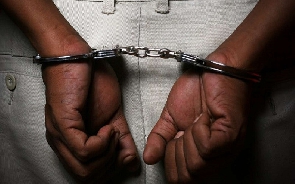Holomuni is a cute but remote community in the Wa East District of the Upper West Region.
With an estimated population of about 2,000 people, the community is basically a farming community located about a 120kms far away from Wa.
They are Sissala by tribe but have adopted some elements of the culture of their playmates, the Gonja people because of their proximity to each other.
Thanks to the late President, Professor John Evans Atta Mill’s Rural Electrification Project, the community, despite its distance, can now boast of electricity.
Holomuni lacked a school to educate the many children produced as a result of the lack of other sources of entertainment.
But thanks to a donation by Dr. Rudolf Stell, a German Philanthropist through Brother Dick Vandergeest, a retired Catholic Priest the community now has a complete primary school.
Holomuni also has a health center which is currently being manned by a qualified Midwife to attend to their health needs especially pregnant women.
But, are all these enough to completely take away the worries of the people and restore some hope and the sense of belongingness? The answer is certainly no.
In the first place, making a simple phone call is a very big source of worry for the people of Holomuni.
Residents of the community have to travel a distance of about 68kms to Bulenga which is the nearest community with network coverage.
Despite this, mobile handsets are a common device in the community.
Mr. Boasah Hanzeri Jiamah, Former Assembly member of Holomuni Electoral Area in an interview with the Ghana News Agency (GNA) in the community said the lack of mobile network in the area was one of the community’s biggest headaches.
“Here, if you wish to make a phone call, you have to buy fuel on your motor bike and ride a distance of 68kms to Bulenga to make the call and return”, he said.
Mr. Jiamah said the situation apart from being risky and time consuming also made it difficult for them to communicate with their loved ones outside the community.
Brother Vandergeest noted that the issue of communication was big obstacle when he was supervising the school project in the community.
“Each time I wanted to send a message across I have to put it to writing and then go to the station to look for someone who is going there to deliver it to the school headmaster”, he said.
Brother Vandergeest said even when the message is sent, it would still take him days to hear from the Headmaster as he also had to travel 68kms to be able to call him.
The situation is indeed frustrating, he bemoaned.
Mrs. Marcy Ali, a Midwife in the community also shared similar frustrations with the GNA, saying each time she needed to send a message across; she had to write a note and give to anybody from the community going to Wa to deliver it.
“I have no other means of communicating to even my superiors when I am here, this is really bad especially in emergency situations”, she lamented.
The second most important challenge facing the community is the lack of a better means of transportation. The only means of transportation is the motorbike and occasionally a Kia truck.
From Wa, one can always get means easily going to Bulenga. But getting means from Bulenga to Holomuni is the biggest headache.
Any of the available means, be it a motor bike or a Kia truck, is certainly not the best option for transporting a pregnant woman in an emergency situation for a distance of about 120kms.
“Here, we do not also have access to the ambulance service and because of the distance whenever I refer patients to the Wa hospital, they always refuse to go”, Mrs. Ali said.
The Midwife said she referred a newborn baby to Wa and that because it was a matter of life and death, the parents used a motor bike to send the child to the Wa hospital.
However, because of the long distance they lost the baby by the time they got to the hospital in Wa, she explained sadly.
Mrs. Ali wished that for now the issue of communication would be solved and that they were provided access to the ambulance service to take care of their emergency cases.
Dr. Winfred Ofosu, Acting Upper West Regional Director of Health Services talked on the maternal and newborn health outcomes in the region and revealed that the region recorded 34 maternal deaths in 2013, 31 in 2014 and 30 in 2015.
He said maternal health rates in the region stood at 196/100,000 live births in 2013, 161/100,000 live births in 2014 and 156/100,000 live births in 2015.
Quite a number of the maternal deaths recorded in the region came from Wa East because of the lack of appropriate means of transportation and the lack of communication network in remote communities such as Holomuni.
Dr. Ofosu indicated that such challenges were those that caused the delays in maternal emergencies, thereby, affecting maternal and child health issues in the region.
He said communication was very important to the Midwife as it would afford her the opportunity to call specialist for advice when she was confronted with a problem.
He explained that reliable channel of communication could also assist in getting referral facilities well informed about a patient for adequate preparation to be made before the arrival of the patient.
Dr. Ofosu underscored the need for the remote communities to be able to have access to the services of the ambulance as they have no alternative means of transportation compared to the towns.
He noted that if these bottlenecks were addressed, they would see an improvement in maternal health cases because the delays would be removed and adequate preparations made before patients arrive to the referral facility.
The Wa East District Assembly and for that matter the government have a responsibility in ensuring that Holomuni and other communities also have access to such facilities to save lives.
Telecommunication network providers should not just see themselves as pure business people but also as entities that have social responsibility towards society.
There are about six mobile network companies operating in the Upper West Region, and the absence of even a single one in Holomuni is quite amazing.
Therefore, they must contribute towards addressing such challenges by extending their network coverage to every single community to facilitate easy communication in emergency situations in such areas.
Obstacles such as these contributed to the slow pace the country went through in its quest to achieve the Millennium Development Goals four and five (MDGs 4 & 5) which are targeted at reducing under-five and child mortality (MDG 4), and reducing maternal mortality (MDG 5).
Ghana and for that matter the world’s commitment to ensure that no woman dies as a result of giving birth would remain a mirage if pertinent issues such as communication and transportation continue to remain as challenges.
But, for now, until these bottle necks are addressed the pregnant woman in Holomuni and many other remote communities will continue to live at the mercy of God. The time to act is now.
Opinions of Thursday, 23 June 2016
Columnist: Prosper K. Kuorsoh














